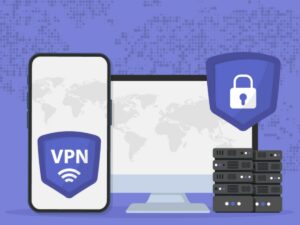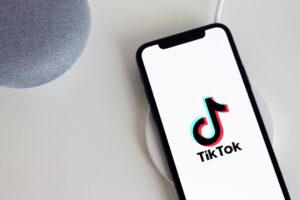Even though the majority of people currently use the term “disability” to refer to persons who have damaged or absent abilities, it will soon be degraded to the same level as “handicapped” (in eyesight, speech, cognition, etc.). Despite significant progress over the last two decades, we are still not there in terms of digital accessibility. As more people become aware of the issues that disabled people face, such as the need for digital equality, their perceptions of being disabled improve. Despite the fact that the majority of people are unfamiliar with the concept of digital accessibility, business executives, public officials, and attorneys are increasingly aware of the need to aid those who use assistive technology in making meaningful and productive use of technology.
The gap between those with and without disabilities is closing as technology advances and becomes more prevalent in our lives, and digital inclusion makes it easier for everyone to use that technology. Although we cannot claim that specialized technology has addressed every problem that a disabled person may face, it has tremendously eased overcoming day-to-day challenges. Because of scientific and technological advancements, all or most disabilities may be eliminated one day. We still have time on our side.
Changing Symbols
Consider how blind people communicated, traveled, and bought items in the mid-twentieth century to see how far technology has advanced in the last 50 years (total blindness).
Previously, there were limited Braille materials, typewriters, and landlines available. We communicated through landlines, typed our work on unwieldy typewriters to produce readable text, and had limited access to books, journals, and newspapers through mail-order blind libraries. We couldn’t read the soup cans or prescription bottles since there were no Braille signs on the buildings. We could hear but not see the television.
Alternative Modes of Transportation
Cabs were too expensive in your area unless you lived in a city with public transportation. There was no guarantee of rail or aircraft travel. We had no navigational devices or technology to assist us in determining our whereabouts. It wasn’t easy to navigate big interior environments, necessitating the need for professional orientation services or government assistance.
Buying From Actual Stores
Even if you had a job and the ability to move about, you needed the assistance of a business or store owner to acquire goods or services. This assistance was only accessible on occasion. Some folks may be able to go shopping on their own, despite the stress.
Technology has advanced dramatically in the last 50 years!
The examples below show how good, accessible technology and a few new concepts have aided us 50 years later by increasing our freedom and moving us up the equality ladder in a variety of ways.
Technology That Improves Communication
We may now connect on a variety of devices, including mobile phones and computer workstations, thanks to Zoom. We make reports utilizing word processors, emails, and text messages from anywhere using Wi-Fi or a mobile signal. We can read almost any magazine, newspaper, or book that strikes our fancy. Nowadays, there are several options for purchasing prescription bottles and grocery store items in cans, cartons, and packages.
All of this is possible because enhanced assistive technology, including screen readers, magnifiers, automatic captioning systems, and instantly accessible digital information, is now available. We may now watch a wide variety of television programs thanks to the advent of descriptive video services (DVS). The Americans with Disabilities Act (ADA) requires that most buildings incorporate Braille labels on room signs and elevator controls.
Firms may also profit from being more accessible online, thanks to software companies like QualityLogic. Their experienced staff can help develop ways and designs that allow the blind, deaf, and intellectually impaired to access goods and information. For them, access is a human right, and no one deserves to struggle.
Making Travel Plans is Simple
Rail and aircraft travel are now safe in many parts of the world, and ridesharing via a mobile device makes traveling around simple. GPS has increased our independence while also making driving and walking more convenient. We could use augmented reality technology from apps like AIRA and Be My Eyes to broadcast real-time assistance from a sighted person to our iPhones, allowing us to navigate freely in new environments like massive skyscrapers.
Online Shopping is Growing in Popularity
The ability to have practically anything delivered directly to your door has made it substantially easier to acquire the things you desire in the last five years alone. We may now access things and services that we would not have known about if we had bought in a real store, in addition to having our purchases delivered to us. Furthermore, the COVID-19 outbreak will always continue food delivery.
Despite progress, the situation may be improved. Much work must be done to improve accessibility and make it the norm (expectation). PDFs and web forms are sometimes inaccessible to people with disabilities because they lack key accessibility components. It would be easier to travel if we had more options on where to go. Many e-commerce sites still require assistance while shopping. However, life was substantially worse even only twenty years ago.
Accessibility Has Improved
Thanks to all of these technological advancements, we’ve come a long way in terms of being able to carry out regular tasks that most people take for granted. Technology has enabled enormous progress, but humans have also worked hard to make the majority of people’s lives easier. “One person’s convenience is another person’s accessibility,” I recently heard. Those who are unable to drive or navigate a grocery store due to eyesight problems must rely on supermarket delivery.
The divide between those with and without disabilities will continue to close as technology advances. Because of 5G networks, as well as incredibly speedy AI (Artificial Intelligence) and ML (Machine Learning) systems, wearable technology will be able to assist us in seeing, hearing, and comprehending what is going on around us. Websites, multimedia, mobile applications, and basic office files are all becoming more accessible, but research into the accessibility of other digital materials is only getting started. From the climate controls in our homes to the touch displays on our appliances and fitness equipment, technology has an effect on every aspect of our lives. To achieve our goal of full inclusion, we must have complete access to all types of digital information.
Despite the fact that technological advancements have improved many aspects of our life, true digital equality remains a long way away. Whatever your point of view, digital access is here to stay. Let us embrace it and continue to improve it by bringing it to people’s attention. This also means training them and collaborating so that it no longer stays a rare skill set that people avoid and instead becomes the norm for effective digital solutions that make our lives easier and more enjoyable.
For more information on QualityLogic’s easy digital accessibility starter kit for your business, click here. They will walk you through the steps required to bring you into the modern era of accessibility. Your customers will grow as a consequence of their services.





